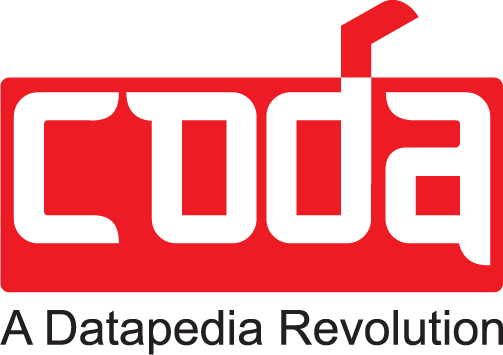Data cleansing plays a crucial role in the cement industry, ensuring precise production insights and smarter resource allocation for maximum efficiency and cost savings. However, occasional data inconsistencies lead to inefficiencies, increased costs, and compliance risks. By implementing robust data cleansing practices, manufacturers can reduce inefficiencies, improve compliance, and optimize cost reduction. This blog explores how data cleansing is key in cement manufacturing.
What is Data Cleansing?
Data cleansing is the process of identifying, correcting, and removing inaccurate, duplicate, incomplete, and irrelevant data from the dataset. The process can be automated through scripts and data quality firewalls or performed manually using data cleansing tools.
Key Benefits of Data Cleansing for Cement Manufacturing
Production Insights and Resource Automation
Clean data fosters reliable analysis of production metrics such as energy consumption, raw material usage, and outputs, which simultaneously leads to smarter decisions. Accurate insights help manufacturers adjust processes and optimize resource allocation, minimizing waste in raw materials, energy, and labor.
Cost Reduction and Enhanced Quality Control
The removal of duplicate and irrelevant data by data cleansing helps companies prevent excessive material usage, production delays, costly errors in decision-making, and financial mistakes in material procurement. On the other hand, it enhances the overall quality control and production.
Improved Compliance and inventory optimization
Maintaining clean and accurate data in the cement manufacturing industry ensures adherence to regulatory standards related to emissions, product quality, and environmental impact. Inaccuracies are eliminated, and accurate data on raw material stock levels facilitates better planning and ordering, preventing overstocking or shortages.
Now that we’ve explored the key benefits of data cleansing in cement manufacturing, let’s take a closer look at the essential steps involved in the process.

Struggling with inaccurate data?
Visit our site to streamline your production process with robust data cleansing.
Key Steps in the Data Cleansing Process for Cement Manufacturing
Data Audit in Data Cleansing
In this step, data is assessed from various sources, such as raw materials, inventory, production processes, quality control, and shipment data, to ensure data quality prior to the cleansing technique.
Data Standardization in the Cement Industry
In the cement industry, the units of measurement and data formats must be clearly defined for any relevant metrics. Data templates must also be created to guarantee uniformity in data entry across many platforms.
Data Profiling
Analyze and evaluate the structure, distribution, and quality of data derived from various sources using data profiling tools to recognize anomalies like invalid ranges, outliers, and missing data.
Duplicate Removal
This step involves identifying and removing redundant data entries within a dataset, such as repeated records of raw material orders, production batches, or shipment details, to make sure that data is accurate and unique when it is utilized for analysis and decision-making.
Data Validation in the Cement Industry
Data validation ensures accuracy by checking information from sources like sensors, lab analysis, inventory, and quality reports. Key values such as temperature, pressure, and chemical composition must stay within expected ranges. Any unusual data patterns could signal sensor malfunctions or other issues.
System Integration
Connect various cement plant operational systems, such as ERP systems, production control systems, and laboratory analysis tools, to a centralized platform. This should take place to ensure that raw data can be standardized, cleaned, and examined for precise information about production quality, efficiency, and overall plant performance.
Monitoring and Maintenance
Regular feedback loops help identify and fix errors, inconsistencies, and duplicates. Periodic data audits ensure accuracy and reliability, making data validation and management an ongoing process.
Challenges Faced in Data Cleansing in Cement Manufacturing
Data Source Heterogeneity
Data integration and cleansing are challenging because cement manufacturing uses a variety of data sources, including sensors, human logs, and laboratory results, all of which have unique formats and structures.
Incomplete Data
Unreliable analyses often stem from the lack of essential information in production processes, raw materials, quality parameters, or shipment details. Additionally, specific details such as the calcium carbonate content in limestone, the percentage of silica, or the levels of iron oxide in a raw material batch are frequently overlooked.
Inconsistent Formatting
Prevention of disputes like different date formats, unit measurements, or naming conventions is necessary, as it impedes precise analysis and reporting when attempting to clean and consolidate the data for analysis.
Data Duplication
Duplicate data on raw materials, product batches, or manufacturing processes can clutter databases and distort analysis. For example, the same limestone variety may appear under different names, or a cement batch may be recorded multiple times due to data entry errors or system glitches.
Lack of Data Governance
The absence of established rules and processes makes it difficult to maintain data quality and consistency. This leads to inaccurate reporting, inefficient operations, poor decision-making, and compliance risks. Without standardization and control, critical processes rely on unreliable data.
While data cleansing offers many benefits, challenges can limit its effectiveness. Overcoming these obstacles is key to maximizing ROI and ensuring long-term success in cement manufacturing.

Learn how Codasol’s expert data cleansing solutions can help you overcome these challenges.
Maximizing ROI In the cement industry
Reducing Operational Costs by Data Cleansing
- Eliminated duplicates and inaccurate records, which reduces material waste.
- Ensure correct proportions of raw materials and prevent production errors.
- Minimize downtime by maintaining an accurate maintenance record.
Enhancing Supply Chain Efficiency
- Improves inventory accuracy, preventing overstocking or shortages.
- Eliminates duplicate supplier records, avoiding procurement issues.
- Ensures accurate pricing and contract details, preventing billing errors.
Improving Production Efficiency
- Identifies bottlenecks and inefficiencies in production lines.
- Ensures machines operate optimally and detects maintenance issues early.
Strengthening Compliance and Risk Management
- Ensures regulatory compliance with quality, safety, and environmental standards.
- Identifies risks related to supply chains, equipment failures, and financial inconsistencies.
How Codasol Masters Data Cleansing
Data Profiling
We analyze your data for inconsistencies, errors, duplicates, and missing values and ensure high-quality data insights.
Data De-duplication
We ensure your dataset is brief, precise, and manageable by recognizing and discarding entries. When your data is clean, fewer errors occur, and business decisions elevate.
Data Standardization
Standardized data structures are used in our data formatting procedure. This makes it possible to integrate, analyze, and understand data effectively.
Data Validation and Enrichment
Once we cleanse our data, we validate it against set rules and add the required details. This gives you a solid, reliable master data set to fuel your organization’s growth.
Wrapping thoughts
From improving quality control and inventory accuracy to ensuring compliance, clean data drives efficiency. Cement manufacturers are optimizing their operations and profiting higher ROI with data cleansing. With CODA’s expert strategies—data profiling, de-duplication, and standardization—you can boost productivity and tap significant cost savings.

Ready to transform your cement manufacturing operations?
Partner with CODASOL for expert data cleansing solutions and drive efficiency today!


